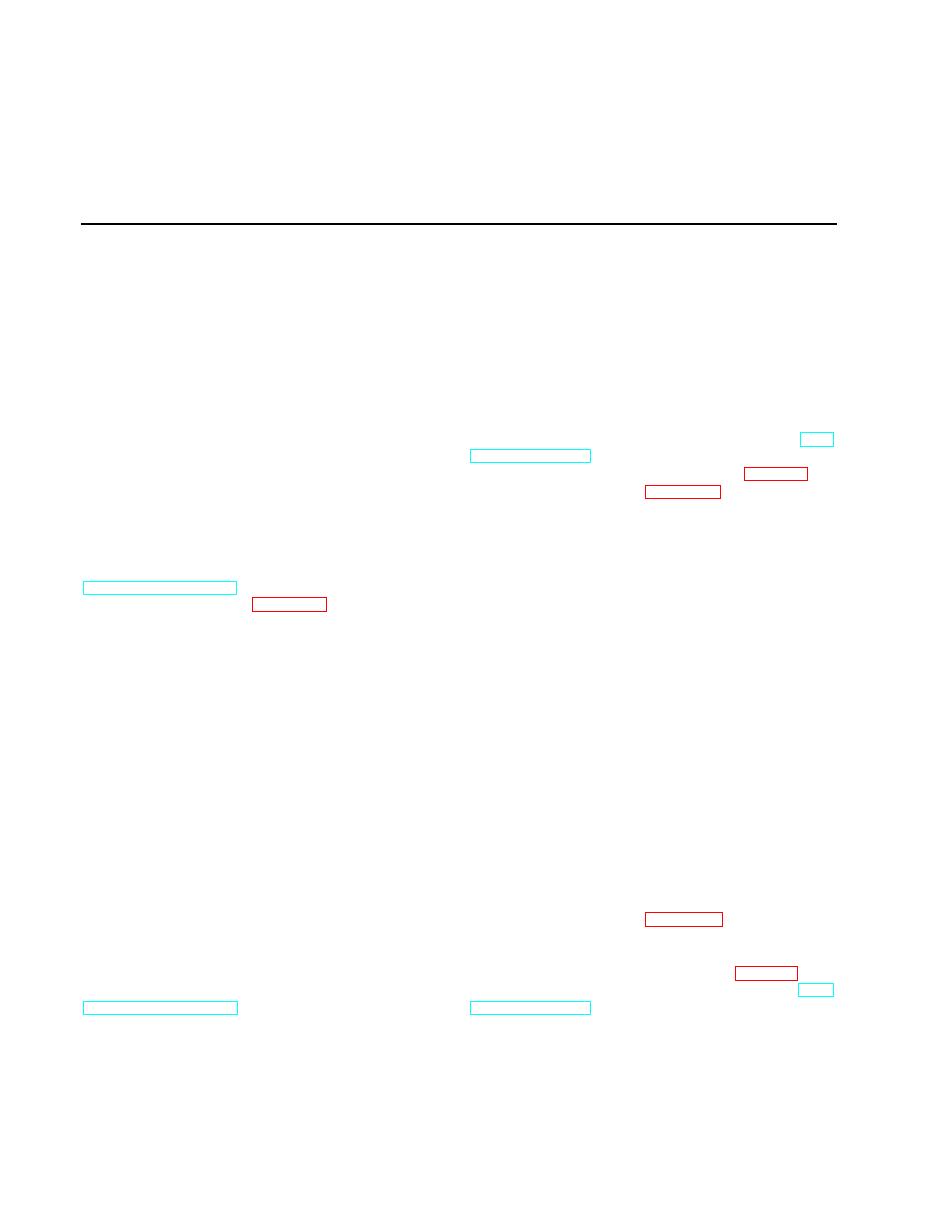 |
|||
|
|
|||
|
Page Title:
CHAPTER 7 REPAIR OF CARRIAGE ASSEMBLY, BOOM ASSEMBLY, FRAME, HOOD, AND PANELS |
|
||
| ||||||||||
|
|
 TM 10-3930-242-34
R E P A I R OF CARRIAGE ASSEMBLY, BOOM ASSEMBLY, FRAME, HOOD, AND PANELS
Section I. CARRIAGE AND BOOM ASSEMBLIES
7-3. Boom Assembly
7 - 1 . General
a. General. The boom assembly serves as an
The carriage assembly and the boom assem-
i n t e r m e d i a t e load supporting member between
bly work together to form the load retrieval,
t h e frame of the lift truck and the carriage as-
lifting, and carrying members of the forklift
s e m b l y . It also is the member that provides for
truck. These are the members that do the actual
the extension and retraction of the forks, as well
l i f t i n g and positioning of the load. The load
as the tilting of the carriage assembly and forks,
f o r c e s arc transmitted by these members to the
b. Removal.
f r a m e of the forklift truck.
(1) Remove the carriage assembly (TM
7-2. Carriage Assembly
10-3930-242-12).
(2) Remove the boom assembly (para 2-8).
a. General. The carriage assembly includes
t h e forks and is the unit that immediately con-
s e m b l e the boom assembly.
t a c t s and carries the load. It is the unit that
d. Cleaning and Inspection.
provides for the side shifting of the forks and for
t h e immediate support of the load.
(1) clean all parts thoroughly, using sol-
v e n t P-D-680, or equal.
b. Removal. R e m o v e t h e c a r r i a g e a s s e m b l y
(2) Remove rust deposits with a wire brush.
(TM 10-3930-242-12).
(3) Inspect the inner boom for cracks,
breaks, broken welds, distortion, and for worn or
s e m b l e the carriage assembly.
pitted upper or side wear strips. (These are
d. Cleaning and Inspection.
w e l d e d to the inner boom and may be removed
(1) Clean all parts thoroughly, using sol-
o n l y by use of a cutting torch. Wear is usually
v e n t P-D-680, or equal.
l o w and replacement is seldom required.)
( 2 ) Use a wire brush to remove rust de-
(4) Inspect the outer boom for cracks,
posits.
b r e a k s , broken welds, distortion and other dam-
( 3 ) Inspect the carriage frame and the two
age.
a r m s for cracks, breaks, distortion, and dam-
( 5 ) Inspect the small components for wear,
aged or broken welds.
distortion and other damage.
(4) Inspect the clevis for breaks and distor-
(6) Weld cracks in the inner or outer boom.
tion.
After welding, remove flux deposits, In areas
(5) Inspect the sprockets for wear and other
t h a t form a sliding surface, carefully grind the
damage.
w e l d s smooth. Then, inspect the welded areas
( 6 ) Inspect the small components for wear,
w i t h the magnaflux or dye penetrant inspection
d i s t o r t i o n , and other damage.
process.
( 7 ) Weld cracks in the carriage frame or
( 7 ) Replace all defective parts.
f o r k s . After welding, remove flux deposits and
i n s p e c t the welded areas with the magnaflux or
s e m b l e the boom assembly.
dye penetrant process.
f.
Installation.
( 8 ) Replace all defective parts.
(1) Install the boom assembly (para 2-8).
e. Installation. Install the carriage assembly
(2) Install the carriage assembly (TM
10-3930-242-12).
(TM 10-3930-242-12).
|
|
Privacy Statement - Press Release - Copyright Information. - Contact Us |